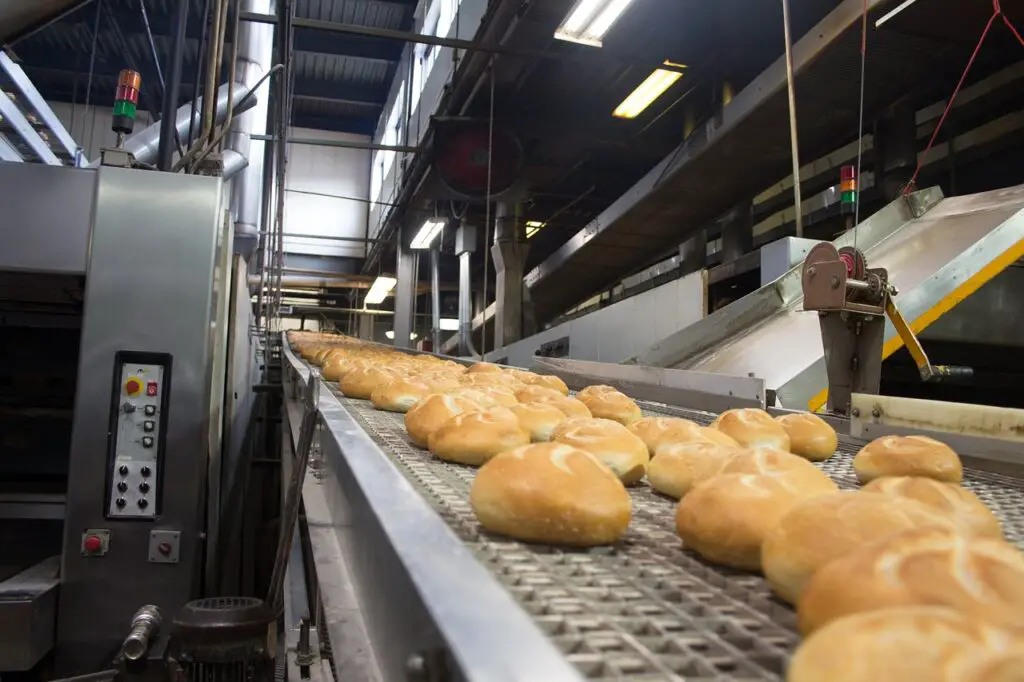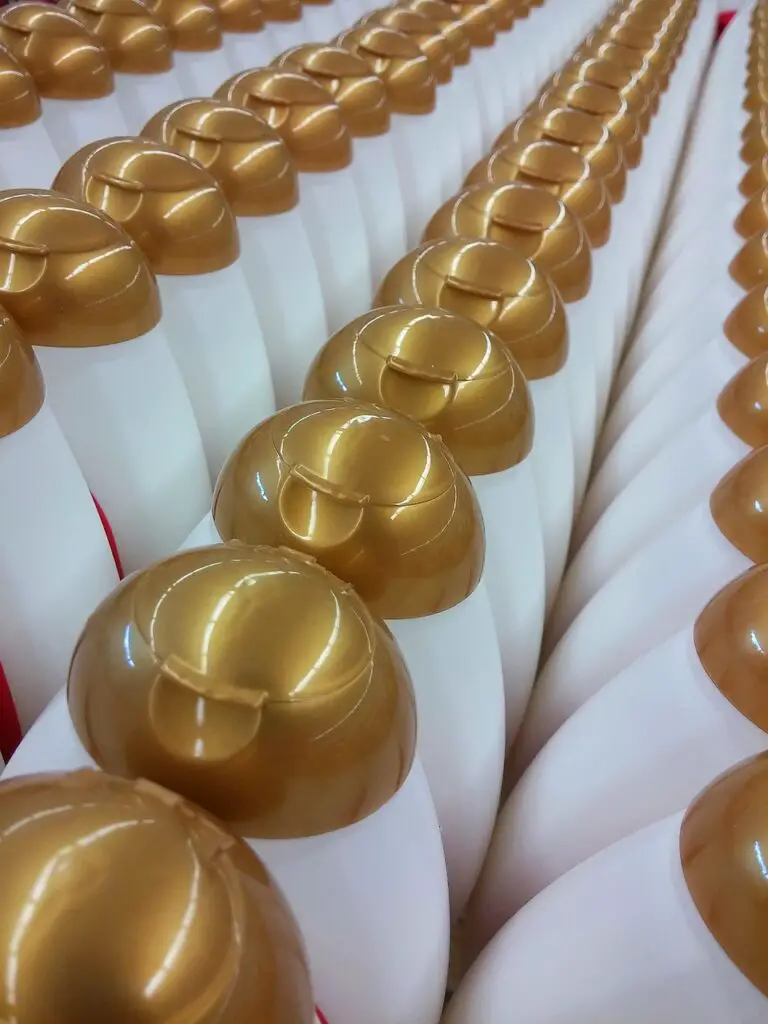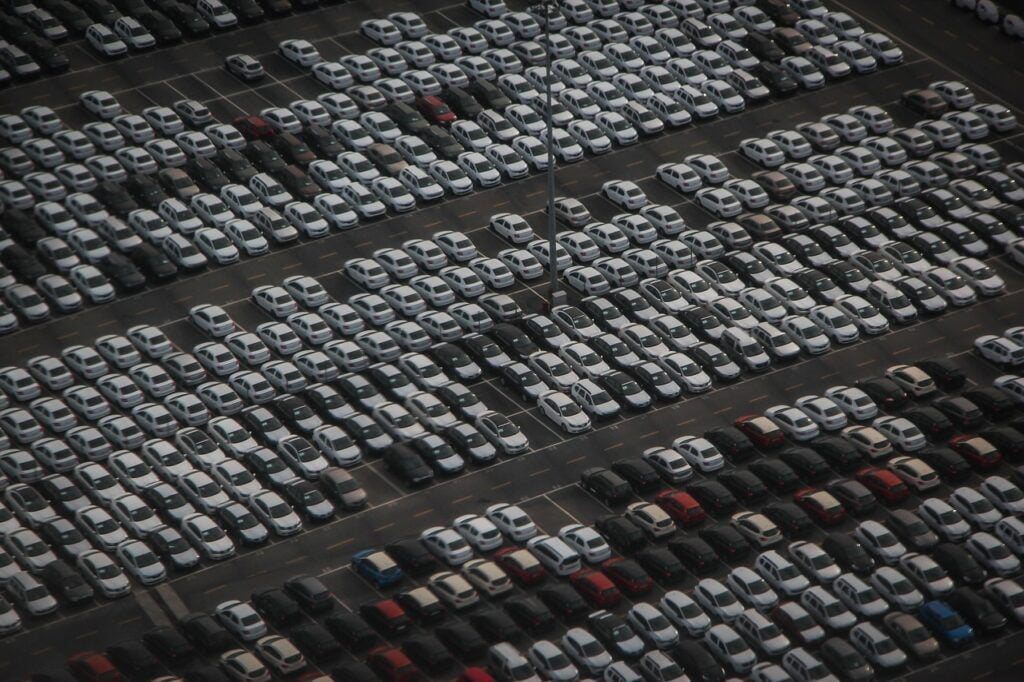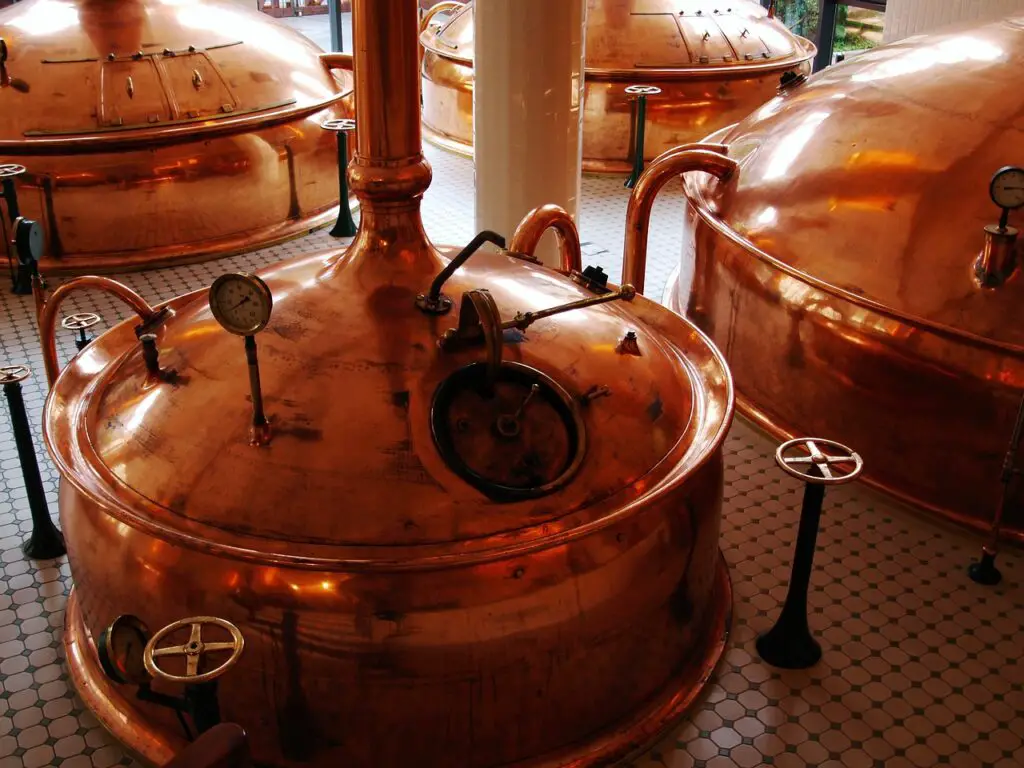There are different types of production with their advantages and disadvantages. We will discuss the main types of production, their criteria for classification, benefits, and limitations.
What is Production?

Production is generally the process of manufacturing that turns raw materials into finished products. In other words, it is the system that revolves around the creation of tangible goods from basic inputs which are referred to as factors of production.
It is simply the act of value addition through the creation of utility. It deals with the satisfaction of human wants through the creation of commodities; creating wealth in the process. Since the satisfaction of human wants is a great measure of economic well-being; we can say categorically that production is a vital system in the economic value chain as it helps to increase a country’s gross domestic product (GDP).

The broader picture of this is the outsourcing of materials and capacities to manufacture. While a company may be directly involved in the manufacture of certain commodities which we generally term ‘production’; another may simply distribute them as their ‘product’. In addition to this, the seemingly intangible act of research and investigation of ideas for the product to be formed is part of the production process.
See also: Industrial Revolution and its Consequences
Different Types of Production
- Direct and Indirect Production
- Primary, Secondary, and Tertiary Production
- Unit, Batch, Continuous, and Mass Production
There are different types of production but all be divided into two main types: Direct and Indirect Production.
Direct Type of Production
This deals mainly with the production of goods and services by individuals usually on a small scale for the purpose of family use or consumption. Here, the primary aim is for immediate consumption not for sale. Subsistence agriculture is an example of direct production; another example is a baker who makes bread for consumption in the family.
Indirect Type of Production
Indirect production is a class of production in which the final product cannot be produced without the help of an intermediate good or service. It involves the manufacture of products that are further used for the production of other goods; for example, fishing is a primary production, the fishes can be processed and the oil extracted and sold as another product. This can be seen as the opposite of the direct type of production. This can be further classified into 3 major types. This classification abounds in the industries which are considered areas of human activities.
3 Main Types of Production Based on the Nature of the Product
- Primary Production
- Secondary Production
- Tertiary Production
a) Primary Production
Primary production can be defined as a type of production that harnesses natural resources in its raw form; this is carried out by the extractive industry. The products are the extracted raw materials that are not yet transformed into other forms of products. In the case of agriculture, primary production is the process of growing the plants or animals.
Examples of primary production include agriculture, mining, fishing, oil extraction, etc.
A major advantage of the primary type of production is that it does require complex processes; for example, you simply plant and harvest. In the case of extraction, you just dig and extract.
Another benefit of primary production is that it provides the necessary raw materials that are then used in secondary production.
Some primary products are perishable and when not transformed into secondary products may become spoiled.
b) Secondary Production
Secondary production is the transformation of raw materials produced by the primary industries into semi-finished and finished products; this is carried out by the manufacturing industry as well as the construction industry. This form of production is carried out by secondary industries, and they are referred to as secondary occupations. The activities here are in the form of manufacturing and construction.
Advanced countries have more secondary industries than underdeveloped countries (with more primary industries).
Examples of secondary production include building, road and bridge construction, brewing, and cement production, etc. Most manufactured products fall under this category of production.
The benefit of secondary production is that it allows us to make products that are more durable and have a longer lifespan than if they were made from raw materials alone.
The major con of this type of production is that it can be more expensive, it takes time to setup the factories, and requires skills to manage and utilize the complex process.
c) Tertiary Production
Tertiary production is the offering of services that facilitates the delivery of the finished products into the hands of consumers. This includes the activities of tertiary industries that are aimed at enabling the consumers to have direct reach to the finished products. The third of the 3 types of production is generally referred to as the production peak point because it is the last tier of production.
Examples of tertiary production include medical services, insurance, banking, transportation, etc. Government services such as administration, defense, and education are also included here.
See also: Second Industrial Revolution and Timeline
The 4 Types of Production Based on the Mode of Manufacturing
- Unit Production
- Batch Production
- Mass Production
- Continuous Production.
Since we have established that production is about creating goods and services to satisfy needs; the management, therefore, decides on the most efficient way to do this. Some scholars have stated that aside from the two categories of production identified as direct and indirect production, production can be classified into four (4) main types based on the input model and the demand for the product. To this end, we have Job Production, Batch Production Mass Production, and Continuous Production.
Job or Unit production
As the name implies, it is the type of production where one unit of a product is produced at a time. Here, firms decide the product to be produced and channel all the expertise, time, and resources into its production before going ahead with that of others.

Job production is often used by small businesses to produce a single product or a small number of products; the products are usually unique or customized. Large industries that take specific client needs into consideration may practice this type of production as well.
Examples of unit production
Examples of job production include custom furniture, weddings, automotive repair shops, and artwork. Customized products or services including tailor-made outfits, or a cake that suits the client’s taste, are other examples of this type of production.
If you need an artist to make a pencil drawing of yourself, the artist can only spend time and resources drawing that single picture until it is completed before starting another artwork.

Another example of job production is a caterer who is asked to serve guests at a wedding; the caterer can only be at one wedding at a time and must finish at a particular wedding before going to another.
Here, customer service sits as the driver of the production process. Manual work is adopted more than mechanical work, and a lot of skill is required.
Advantages and disadvantages
The advantage of unit production is that the product is customized exactly as needed by the customer or the consumer. This means more flexibility in design. If a customer wants a specific feature added to a product, it can be easily accommodated in job production. Another benefit of unit production is that it results in high-quality products since each unit receives individual attention. Unlike in large-scale production where multiple, similar products are produced at once and the consumers would just have to make do with what has been produced, whether it meets their needs or not.
One of the disadvantages of this form of production is that it is slow, time-consuming, and therefore difficult to scale. Another negative effect of job production is that it can be expensive because the producer or manufacturer may charge higher to compensate for the time needed to customize the product. Additionally, this form of production can be inefficient if there are frequent changes in customer specifications.
Batch Production
Batch production is the manufacture of products in small, predetermined quantities. This type of production is similar to mass production in that it involves using repeatable processes to produce large numbers of items; however, it is different in that each batch is produced as a single unit rather than being split into individual parts.
In this type of production, the emphasis is on a structure for a defined quantity of product that is manufactured or is to be manufactured before moving to the next item.

An important distinguishing feature of batch production is that each batch can be customized. This type of production takes some characteristics from unit production and mass production.
It is important to note that here, demand plays a huge role. This could be determined by the level of the product’s seasonality. To this end, the total number of required units is decided before production, and once started, the process may not be stopped halfway.
Examples of batch production
- For food items such as cookies or cake mixes; each batch can have a different flavor or different ingredients.
- Products such as shampoo or soap; various ingredients, colors, shapes, and aromas can be made with batch production.
- Cosmetic products
- Hardware items such as screws or nails of varying sizes and thicknesses can be made with this kind of production.
Baking 50 loaves of white bread after which 50 loaves of chocolate bread are baked is a typical example of batch production. Biscuits, confectionaries, and other fast-moving Consumer Goods are good examples of products manufactured through batch production. This type of production also finds application in medical industries and system hardware.
Benefits
The advantage of batch production is that it allows for greater flexibility than mass production; it provides the ability to produce a variety of products with minimal changes to the manufacturing process. For example, if a company wants to produce a new product, it can do so without having to invest in expensive new machinery or retooling its assembly line. This means different batches may be customized differently if needed. For example, a beverage company may decide to produce one batch of beverages with vanilla flavor and another batch with banana flavor.
A great benefit of this form of production is that it limits the magnitude of errors. If an error is made in one batch, it affects a few products and can be corrected easily compared to mass production in which an error affects all the products and is more difficult to correct.
Disadvantages
The disadvantage of batch production is that it can be less efficient than mass production; that is, the process of setting up and running batches can be time-consuming, which can lead to increased costs. For example, if $100 worth of electricity units are needed to produce a single batch of strawberry-flavored beverages, producing 10 batches of different flavors means you will consume $1,000. The same $100 worth of electricity units may just be needed for mass production (in larger numbers) of a single flavor instead of different flavors.
3) Mass Production
Mass production is the large-scale production of goods; it is also known as Volume Production or Assembly Line Production. It is characterized by the use of assembly lines, division of labor, and standardization of parts.
In this type of production, standardized items are produced on an assembly line in large numbers. It is known as flow production because the process is unidirectional, flowing smoothly in one direction until the final products are completed.

Examples
A typical example of this is the production of cars. Here, the coordinating tool is the specialized nature of the process. And all things being equal, the products are expected to be identical since there are all passed through the same process in equal time frames and facilities.
Aside from car production, this type of production is also adapted by industries where continuous production of identical and standardized products is required. The single work rule of each workstation makes for specialization which in turn births greater productivity and efficiency.
Other examples of products that are typically mass-produced include automobiles, electronics, appliances, clothing, and toys.
Here, demand may not necessarily be the deciding factor. It is merely operating on a system that requires a huge production volume.
If 1000 products are manufactured using mass production, each one of them should be exactly the same. There should be no deviation in the product manufactured.
Advantages
The advantages of mass production are lower costs, higher quantity, and higher efficiency. It lowers costs because fewer people are required due to the fact that machines and robots take over the production process.
Large numbers of products can be produced at once in mass production and in a short time, which increases efficiency. This means that it allows for economies of scale, whereby the per-unit cost of a product decreases as the number of units produced increases. This makes mass-produced products more affordable to consumers.
Disadvantages
Some disadvantages of mass production are that it can result in repetitive and monotonous work for employees. Additionally, mass production can create imbalances in supply and demand, as factories may produce more goods than there is consumer demand for. This can result in overproduction and surplus inventory.
Product customization is lost in mass production, that is, there is no uniqueness. A major negative effect of mass production is that a single defect or error affects a large number of products which can be very expensive and costly to the company when such errors occur.
Because machines are made to work, they can cause pollution such as air pollution with fumes and carbon, noise pollution, and can generate so much heat. This is a major setback for this type of production.
A limitation of this form of production is that the manufacturing of these products requires high sophistication which implies huge initial investment as well as operational capital demands.
Continuous Production or Flow Production
Continuous production is a type of manufacturing process where items are produced without interruption. It is slightly different from mass production, though some people confuse these two types of production. There is however a single difference between the two. This difference is the amount of mechanical work put in, whereas mass production blends a mix of human and machine abilities; continuous production takes on an automated system with no human input whatsoever, making it a 24 hours 7 day circle, all year round.
Here, the bulk of the work is done by machines, and since the nature of the work is a continuous one, it requires a controlled environment for the process.

Examples
Some examples of products that are typically produced using continuous production methods include bottled water, soda, plastic bottles, semiconductors, metal products, glass products, etc.
A good example of continuous production is in a brewery. Since Brewing takes a lot of time, the production of which is equally important; there is, therefore, a system in place to guarantee continuous production through the continuous inputs of the raw materials in the form of water or malt, and the continuous output of the required wine or alcoholic drink without human interference in the process.
Chemical production as well as plastics takes this form of production as well where it takes long days or weeks to produce the finished product. the human effort is that of putting in raw materials and the procedure is operated automatically through the finished products.
Advantages and disadvantages
The advantage of continuous production is that it is very efficient since there is no downtime between steps in the production process.
The disadvantages of continuous production include the high initial investment required and the fact that it can be inflexible if product demand changes suddenly.
Conclusion
The type of production adopted by any company depends on the nature of the company, the resources available to it, its level of expertise, and the demand for its products. Larger demands require the use of mass production. Each of the types of production has its benefits and disadvantages.
Last Updated on November 2, 2023 by Nansel Nanzip BongdapNansel is a serial entrepreneur and financial expert with 7+ years as a business analyst. He has a liking for marketing which he regards as an important part of business success.
He lives in Plateau State, Nigeria with his wife, Joyce, and daughter, Anael.
